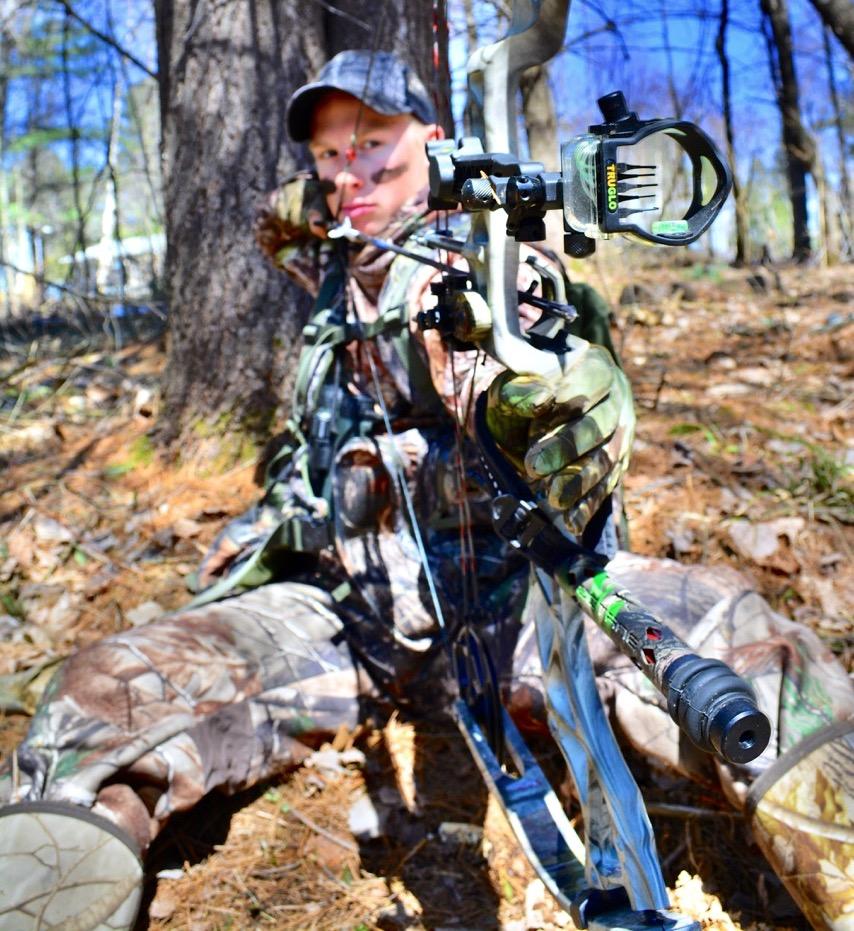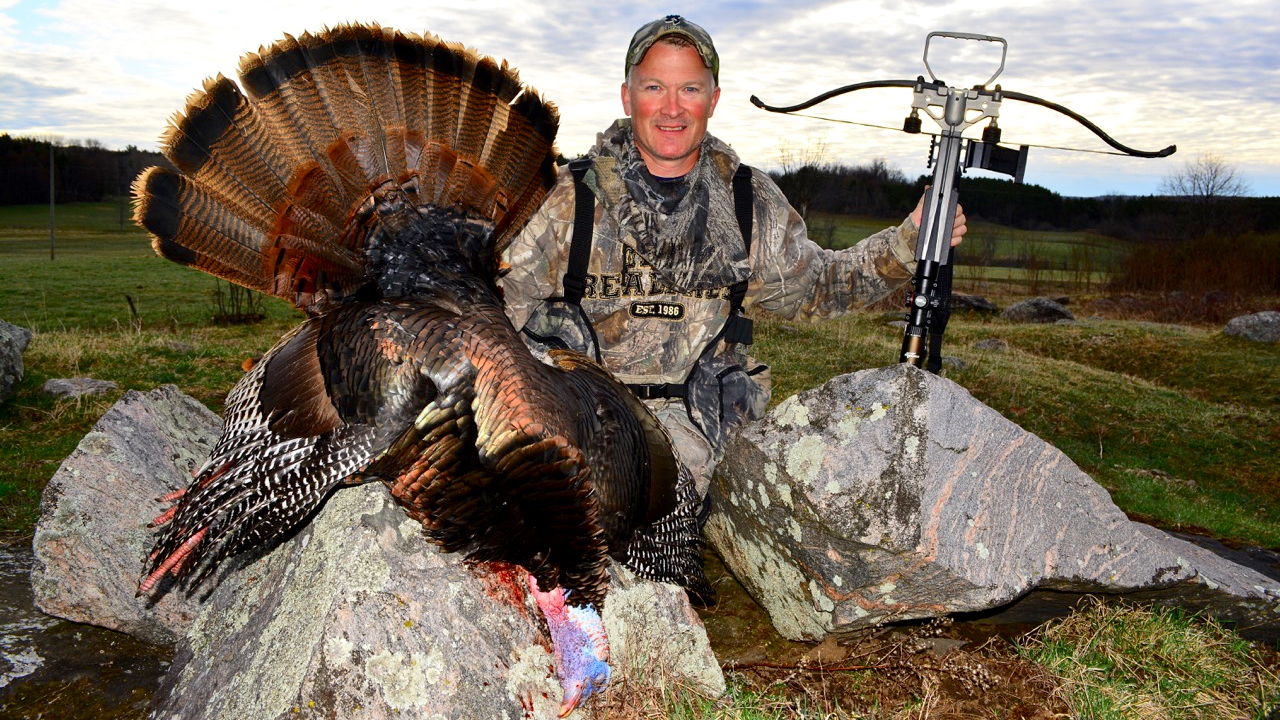Beyond the blind
For a challenging but rewarding wild turkey hunt this spring season, head into the woods with your bow
Advertisement

Gear & prep
Although the gear and prep work don’t vary much from any other style of turkey hunting, there are a few key items that will help you on your quest for a blind-free gobbler. Wearing a camouflage face mask has always been a staple for me when hunting turkeys with a gun, but I always go with face paint when bowhunting. That’s because the tiniest bit of drag from the cloth of the mask on your bowstring as you release the arrow can be enough to throw the arrow slightly off course. With chance for error already high, and when your target is the size of a tennis ball, the slightest deviation can mean the difference between a quick, ethical kill and tracking a wounded bird.
When it comes to selecting the appropriate bow, arrow and broadheads, meanwhile, it’s a matter of personal preference. Whether you like to shoot fixed-blade, mechanical or guillotine-style broadheads, the two biggest pieces of advice I can give you are to tune down your bow to an easy-to-hold draw weight and practise, practise, practise.
Advertisement
Since wild turkeys aren’t big game like moose, elk or bear, there’s no reason to shoot a fully torqued, mega-pound bow. Save your shoulder, and reduce your draw weight to as low as possible. You’ll have to re-sight your bow, but it will be well worth it—not only will you get less tired while practising, you’ll also be able to hold at full draw that extra bit longer. This can be a huge advantage as you wait for a bird to step out from behind the cover after you’ve drawn.
As always, practice makes perfect, and you not only owe it to yourself, but also to the birds you chase to be as accurate and persistent as possible. Get comfortable with shooting your bow in positions you would normally encounter in the field. Pick a minimum distance you plan on shooting and stick to it. I usually take a distance I’m comfortable shooting at in a controlled scenario, then cut it in half for actual hunting situations. When I’m well practised, I can shoot out to 50 yards accurately, so in that case, my max in the field is 25 yards.
Do some research and consult diagrams online to get familiar with a turkey’s vital areas—the head, neck, heart, lungs and liver—and the shot placement needed depending on the positioning of the bird. For face-on shots, aiming where the beard of the bird meets the body will make contact with the vitals. For broadside shots when the bird is in full strut, aim just above the knuckle of the wing; if he’s not in strut, aim right at the knuckle of the wing. And for shots from behind, aim right where the tail feathers meet the body.
Advertisement

